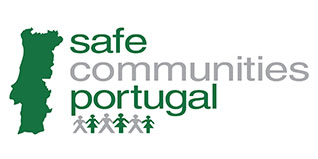People are making more personal and business video conferencing calls during the current lockdowns. Video conferencing is a live audio and video conversation between 2 or more people in different locations, conducted using phone, tablet, laptop or desktop computer. Some video conferencing services allow you to share files, pictures, or each other’s screens. Also, it can collect data on the participants and conversations that can be shared with third-parties. The following are security recommendations to protect your use of video conferencing solutions:
- Download Trusted Software: Only download the service software from your phone or tablet’s app store or from the service provider’s official website.
- Security Controls: Ensure the software version contains the security and privacy controls that you require. Some “free” versions have limited security controls.
- Opt Out of Data Sharing: Understand what conference data the service will access. If there is an option to “opt out” for data sharing, use it.
- Strong Password: Make sure that your password different to all your other passwords, and difficult for someone to guess. If there is an option to set up a two-factor authentication, use it.
- Pre-Test Service: Most services have a ‘test’ function to ensure: your microphone and camera work correctly, and that your internet connection is fast enough.
- Know Service Capabilities: Learn how the service works. At a minimum, know how to mute your microphone, turn off the camera, and manage who can join the call. This will give you more control over what is shared with others.
- Conference Information Access: Know what the services is doing with the conference information (audio, files, pictures, messages). Many services allow you to record the call, share files, or show what is on somebody’s screen. Find out how to tell if the call is being recorded, what exactly is recorded, and who can access the recordings.
- Make Only Private Calls: Do not make the calls public. Connect directly to the people you want to call using your contacts/address book, or provide private links to the individual contacts. For some video conferencing services, you can set up the call so that a password is required in order to join. This adds another layer of protection. Do not post the link (or the password) publicly.
- Know Participants: If you are organising the call consider using the lobby feature to ensure you know who has arrived. This is especially useful if individuals are joining the call via an unrecognised phone number. Make sure people are who they say they are before they join the call (the password function described above can help with this).
- Review Your Background: Take a moment to think about what your camera shows when you’re on a call. Would you want to share that information with strangers? Consider blurring or changing your background – you’ll find instructions on how to do this on the support website for your video conferencing service.
- Update All Software: Make sure that all your devices and applications (not just the video conferencing software) are kept up to date. Applying software updates is one of the most important things you can do to protect yourself online.
NCSC: Video conferencing services: using them securely
How to set up and use video conferencing services, safely and securely
https://www.ncsc.gov.uk/guidance/video-conferencing-services-using-them-securely
